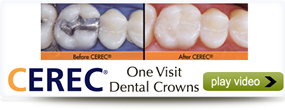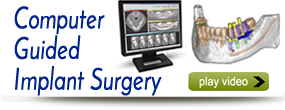DEPENDING ON HOW MANY wisdom teeth come in and whether or not they have to be removed, most adults have 28-32 adult teeth. There are a few outliers in either direction, however. Some people have fewer teeth than they should (called hypodontia or congenitally missing teeth), while others have one or more extra (called hyperdontia or supernumerary teeth). How does this happen and what do we do about it?
Congenitally Missing Teeth
Between 2-4 percent of the population has at least one tooth missing from the adult set. The most common teeth affected by this condition are wisdom teeth, lower second premolars, and upper lateral incisors. It’s not really an issue to be missing wisdom teeth, but missing incisors and premolars can cause difficulties with chewing, the surrounding teeth may shift, and the decreased jaw support can lead to additional tooth loss.
The reason for congenitally missing teeth is nearly always genetics, which is why you tend to see it run in families. Sometimes it happens in conjunction with a larger genetic disorder like Down syndrome or ectodermal dysplasia.
Supernumerary Teeth
At the other end of the dental spectrum is hyperdontia, where extra teeth develop in the jaw. It happens more often with adult teeth than baby teeth. We don’t fully understand what causes this condition, but one leading theory is that it could be the result of a tooth bud dividing abnormally, producing two teeth instead of one.
Supernumerary teeth aren’t always shaped like normal teeth. They can also be peg-shaped, have multiple cusps, or simply be a mass of dental tissue. However they develop, they often don’t have room to erupt, so they remain impacted in the gums, causing crowding and alignment problems for the normal teeth.
Treatment For Hypodontia And Hyperdontia
The typical treatment for extra teeth is to extract them if there isn’t room for them,but dealing with a congenitally missing tooth can be more complicated. Depending on the age of the patient and how long the tooth has been missing, different options may be better. The first step is usually orthodontic treatment so that the gap will be wide enough to fit a replacement tooth. These come in a few forms:
- Removable partial dentures are a simple solution. They can be attached to a retainer or anchored in place by the surrounding teeth.
- Dental bridges “bridge” the gaps by anchoring to the neighboring teeth, but unlike dentures, they’re cemented in place.
- The most permanent solution is a dental implant, which functions like a normal tooth. An implant consists of a post fixed in the jaw bone with a crown on top that matches the natural teeth. Implants can also provide support for bridges when multiple teeth are missing.
Let’s Take A Look At Those Teeth
With regular dental appointments, we can catch cases of hypodontia and hyperdontia early on and make a plan for how to address it. Keep up with your daily dental hygiene routine, keep scheduling those regular appointments, and give us a call if you have any questions about these rare conditions!










